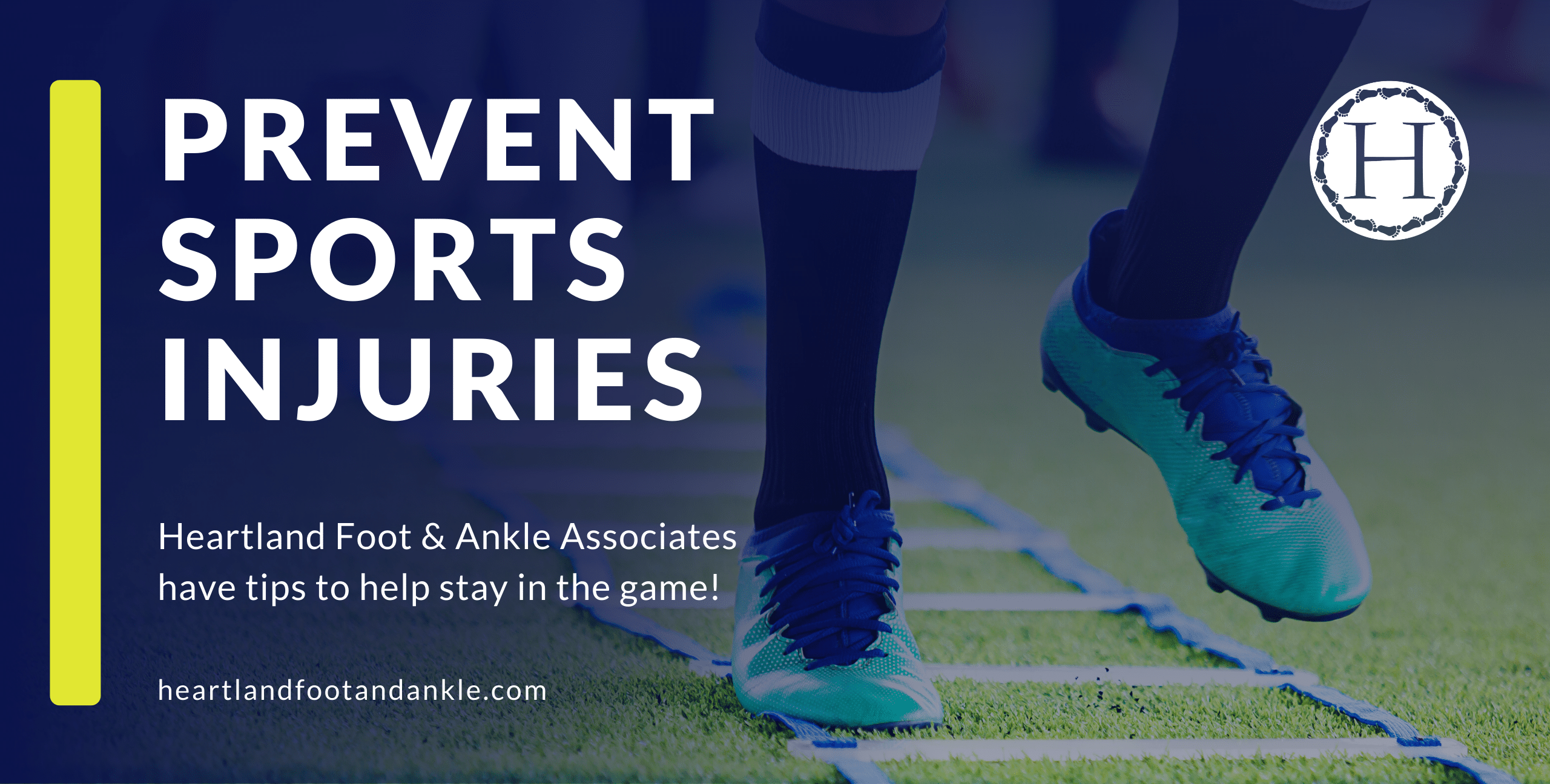Prevent Sports Injuries in Any Season!
Do you have a “season” where you’re active in your favorite sports?
Perhaps you start up a local baseball league in the spring, or have a child who does football or volleyball during the fall high school season. Maybe you like to run, and some people find a way to do that no matter what the weather looks like outside!
There is a time for favorite sports and activities, and you don’t want anything getting in the way of it. Unfortunately, getting hit with a bad foot or ankle injury can throw a wrench into your chances of playing most of a season.
Unfortunately, sports injuries may still occur no matter what you do, but that doesn’t mean you can’t have a big influence on reducing your risks. Some simple, common-sense approaches to activity can play a huge role when it comes to keeping you or your loved one playing strong—instead of spending weeks on the bench.
Always Take Time to Warm Up
We are not cheetahs (as cool as that might be). Our bodies were not built to endure the forces of sudden bolts of motion off a resting state. Without “getting ready” for heavy activity, we open ourselves up to greater risk of injuries such as Achilles tendinitis and tears.
We have previously discussed stretches for active feet. These can be a great part of a good warm-up, but they shouldn’t be the only thing you do.
Performing some “dynamic” stretching is also important, and will help prepare your body in an overall sense much more than just standing still and doing stretches. Dynamic warm-ups can be as simple as a few minutes of light jogging, as long as you are getting those legs and feet moving.
Always Wear the Right Equipment
No football player would go onto the field without a helmet—and specifically their helmet, at that. Our feet and ankles deserve just as much special attention.
Whether you are playing an official game or a pick-up game on the weekend, your footwear should always be made for the sport or activity at hand. That means running shoes for running, basketball shoes for basketball, etc.
Different sports make different demands on the feet and ankles. Some, like running, emphasize long bouts of repetitive impacts against pavement. Others, like basketball or tennis, place a lot of focus on pivots and side-to-side movements.
Designers of athletic shoes take these different demands into account and design their footwear to help feet and ankles better accommodate them. This helps reduce the risk of injury by providing support where it is needed most.
Of course, no shoe will do much good if it is worn out. Check wear and replace shoes when needed. We or an associate at a sporting goods store can provide sound advice on when you can tell shoes need replacement.

Cross-Train
Focusing on certain exercises over and over might seem like the fastest ticket to excelling in a particular sport, but you should always keep the holistic nature of your body in mind.
If only certain muscles, tendons, and other tissues are being worked, they become stronger—but the rest of our bodies do not. And if you aren’t giving those same tissues enough rest, instead of getting stronger they’ll eventually break down and become injured.
Switching your workout and training routines up benefits you in two ways:
- It helps us be more fit as a whole, and better prepared for all types of motion.
- It gives the areas we put the most focus on more opportunity to rest and recover, helping to prevent overuse injuries.
If you play a variety of sports throughout the year, all the better! This will help focus on different areas as well.
Know Your Limits
Our bodies are awesome machines that can improve all on their own with the right work and training. However, this isn’t magic enough to all happen in a short amount of time.
If we work ourselves too much over too short of a time, without giving our bodies the chance to rest, it will gradually weaken our structure instead of strengthening it. This leads to problems like plantar fasciitis and stress fractures all too easily.
Training should always start at a reasonable, comfortable level and never build more than 10 percent in intensity per week. You can measure that intensity in weight, time, or speed—just make sure it stays steady. If you feel overly fatigued or strained, do not be afraid to dial that increase back beneath 10 percent.
It also pays to know where certain conditions or abnormalities in your feet may cause problems. For example, if you have flat feet, high arches, or tend to have your foot roll inward too far while moving (i.e., overpronation), they can all increase stress on your feet. Fortunately, these problems can usually be addressed by certain forms of footwear, custom orthotics, specific stretches and exercises, and more.
Make Sure Your Feet are in Top Shape
While we are happy to help patients who have suffered sports injuries, we find it’s a much better experience for you to not suffer from them in the first place!
We can help you determine potential problem areas in your foot structure for the sports you play, and provide advice and treatments that can greatly lower your sports injury risk. And if you already have a condition such as chronic heel pain, getting it addressed as soon as possible will be a great boost to your overall foot health and your performance!
To schedule an appointment with Dr. Lockwood at Heartland Foot & Ankle Associates in Bloomington, IL, call us at (309) 661-9975. We will be happy to see you soon.
